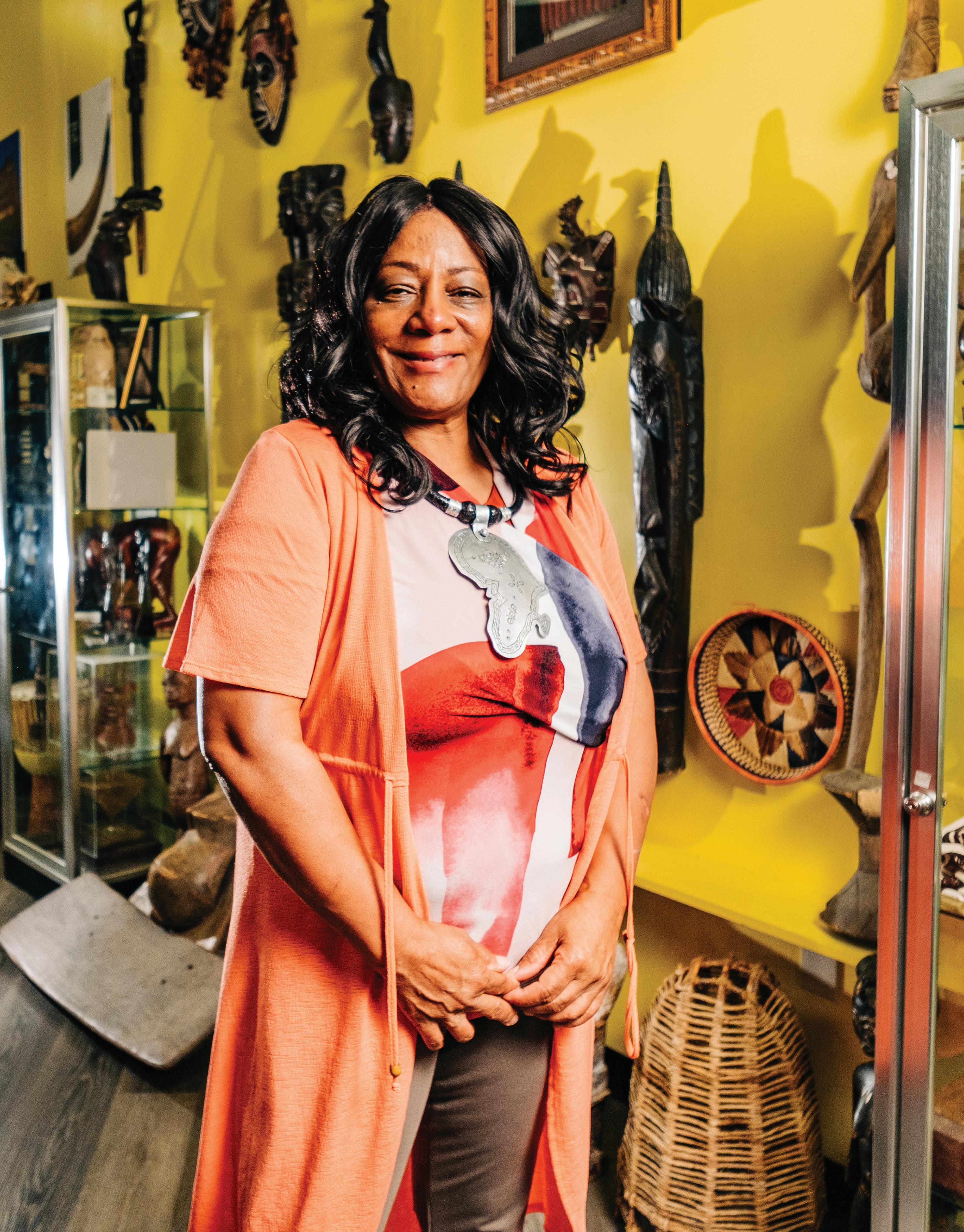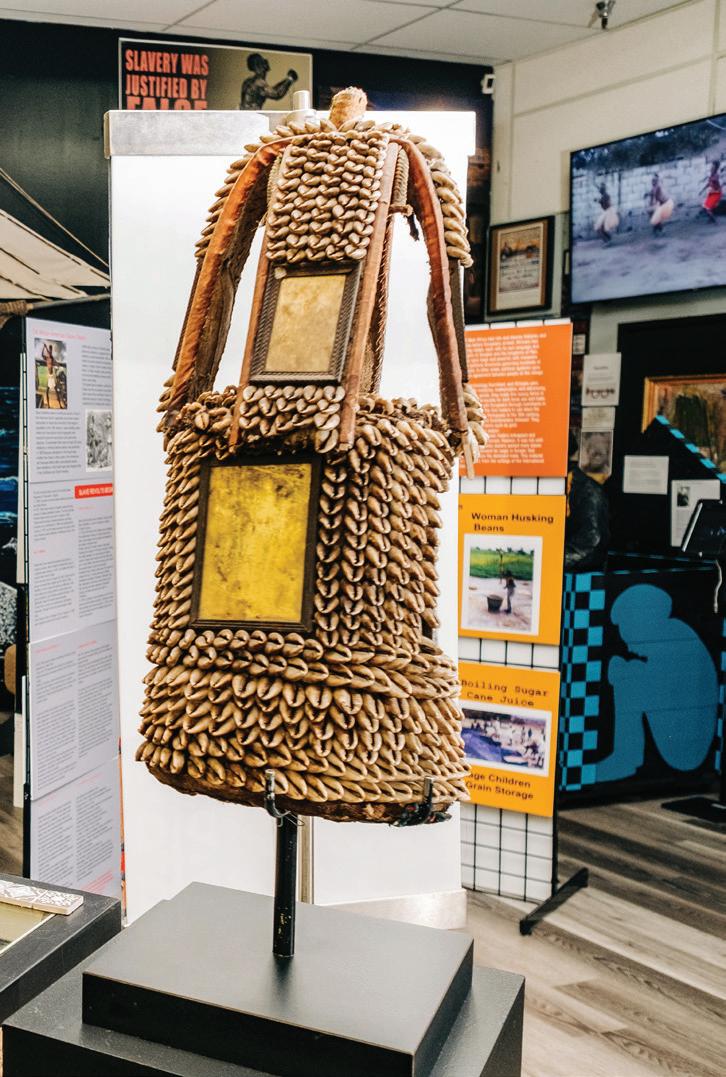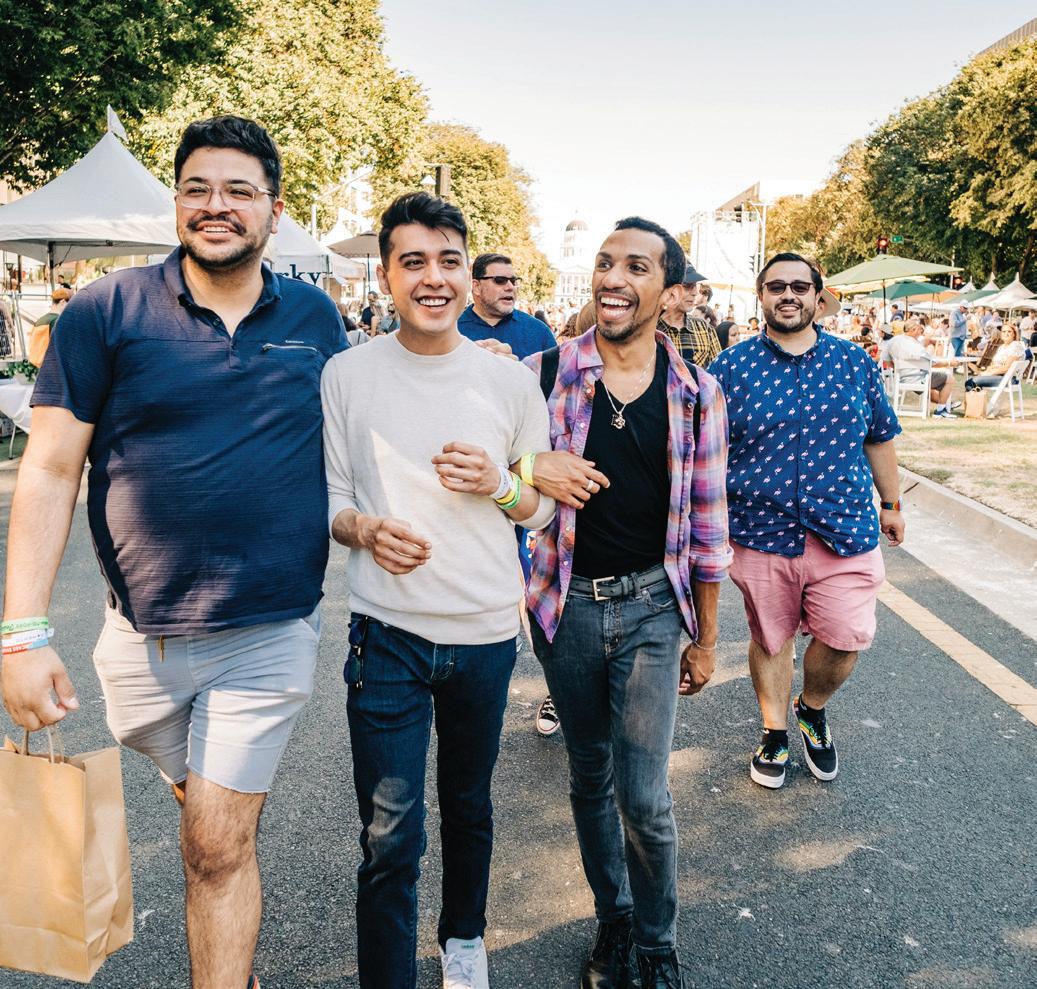
6 minute read
Celebrating Our Diversity
By Sonya Bradley
Shonna McDaniels, Founder and Executive Director, Sojourner Truth Heritage Museum
Advertisement
Francisco Chavira

Please have a seat. There’s plenty of room at the table. Because when you’re the third most diverse big city in America (according to a 2020 U.S. News & World report), one of the ways you get there is by expanding the proverbial table, so that everyone feels welcomed and invited to take a seat and fully experience Sacramento.
Sacramento’s diversity is something the city and residents take immense pride in because it makes us better neighbors and interested hosts who will make you feel at home—because you have taken an interest in their work or vocation, and because you’re enjoying the attractions and the sights to gain a better and deeper understanding of Sacramento’s culture to enhance your wellbeing.
You’ve been invited, so let’s go. Now, we’re a little spoiled by the restaurants, large-scale events and cultural venues that showcase our bounty of ethnicities, races, cultural identities and backgrounds. Some of these places are well-known, but Sacramento’s diversity shines brightest in some of the most inauspicious, offthe-beaten-track locations where food, events, and arts and culture fill in the big picture.
Here in America’s Farm-to-Fork Capital, locally grown produce is infused into a variety of ethnic dishes. Mint, herbs, carrots, cilantro and cucumbers grown nearby are added to a freshly baked bun—rivaling any bakery in France—for a banh mi, or they top a hot, steaming bowl of broth for pho—this is typical of what you’ll find in one of the many restaurants located in Sacramento’s Little Saigon. They’re owned and operated by first- and second-generation Vietnamese immigrants, ensuring a true taste of home. Tucked away in a neighborhood business and arts center that provides resources and cultural items for its residents is the Sojourner Truth Heritage Museum. The museum is filled with artifacts and stories dedicated to sharing African-American history, experiences and culture. On the third Saturday of each month, an African Marketplace envelops the entire center, featuring artwork, homemade dishes, crafts and African clothing. It is complemented by African drumming and musical performances.
The name Cesar Chavez, especially here in California, is spoken with reverence, so much so that there is an official Cesar Chavez holiday in the state. Coinciding with Chavez’s work for the United Farm Workers and the Civil Rights movement in the 1960s and ’70s was the rise of the Chicano identity, people who celebrated their Mexican heritage in conjunction with their contributions to American society. The Sacramento-based Royal Chicano Air Force, an artist collective, José Montoya, Royal Chicano Air Force, Atencion grew out of that time. They developed Campesinos, n.d., silkscreen on paper, 63.50 x 48.26 cm murals, prints and photography to (Royal Chicano Air Force illustrate the rise Archives, The California Ethnic and Multicultural Archives, of the Chicano Special Collections Department, the University of California, and their fight Santa Barbara Library) for human rights. Sacramento’s Southside Park is home to an RCAF mural that showcases their various artistic styles representing the broad strokes of Chicano and Latino history and life.
Like every region of the country, Sacramento sits on Indigenous people’s land—in this case the Nisenan, which is part of the Maidu tribe. The State Indian Museum State Park provides a glimpse into the rich heritage of California Indians and focuses on three themes: nature, spirit and family. To get the full understanding of the relationship between the native peoples and the 19th century agricultural and trade colony built by John Sutter, the credited founder of Sacramento, California State Parks is reinterpreting the origin story to provide a fuller view of the city’s founding. Sutter’s Fort, which is adjacent to the Indian Museum, will be expanding its story.
On your visit to Sacramento, put a few of these places in your phone’s GPS and explore some of these gems. Discover the neighborhoods and communities that give Sacramento its layers of diversity. Make yourself at home, because that’s how you’ll feel, and then make room at the table for others to join.
Sojourner Truth Heritage Museum
Francisco Chavira
Royal Chicano Air Force, Southside Park Mural, 1977, 14 x 110 feet (Southside Park, Sacramento)




Farm-to-Fork Festival State Indian Museum Park


Visit Sacramento’s Commitment to Truly Seeing You
When we talk about the city we call home, you may hear about the zaniness of the fans of Sacramento Republic FC, our professional soccer team; the reverence for the taste of the sweetest, juiciest tomato grown at the farm just a few miles away; or the awe with the all-knowing smile that Sacramento has probably more murals than any other big city. (Prove us wrong.) This is the ethos, pride and humility that makes Sacramento a city that strives to welcome all types of people because we want to share our bounty with the world.
When Visit Sacramento officially established its diversity, equity and inclusion team, it was done to ensure that the people who make up our tourism and hospitality industries and the visitors who drove, flew or biked into our city were truly reflective of the community—a community that is the third most diverse big city in the country.
Our vision is to provide opportunities
and benefits for everyone. And we see our purpose as advancing a culture of diversity, equity and inclusion in our community.
Why? Because we are the voice of the visitor. We are the conduit to hospitality and tourism partners. We are the advocates to ensure that you have meaningful experiences and long-lasting memories of your stay. We also have a responsibility to grow and nurture the next generation of hospitality and tourism professionals.
For visitors, we understand the importance of finding the right hotel, good restaurants to try and things for the kids to do. But whether it’s a weekend trip, an extended stay with family, or a few free hours during your convention, we really want you to leave here with that “one thing.” That thing that you’ll tell your family and friends about, that you’ll post on your social media feed to brag a little (or a lot), or just that thing that causes you to think differently or appreciate your loved ones a little more.
Visit Sacramento has taken on the responsibility with its partners—hotels, attractions, restaurants, museums, outdoor recreation and so much more—to collaborate on programs and practices to improve our efforts in diversity and inclusion for the partner and the visitor to give you that “one thing.”
We have extended the “table” to give more of our community and neighborhood seats to share their unique and authentic experiences with visitors, such as the neighborhood restaurant that makes melt-in-your-mouth tamales using abuela’s secret recipe. Or the small art gallery you almost walked right by that shares the history of California’s Indigenous peoples in a non-traditional fashion. Furthermore, we are sharing and working with our partners to keep them current on issues and bringing training to help them interact with visitors who may look different or have accessibility needs.
Visit Sacramento is still learning. We don’t have all the answers. And we will get some things wrong. But it’s more than being intentional: We are committed to understanding and acknowledging the outcomes of our efforts so we can continually get better in offering diverse and inclusive experiences that create the memories you’ll return for again and again.








